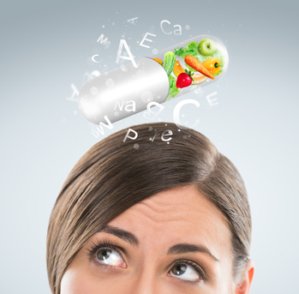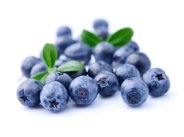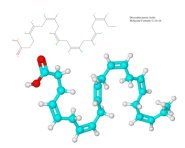Essential nutrients
 Essential nutrients are those vitamins, minerals, fatty acids and amino acids that the body needs in order to function. We can't do without these substances and there are no other substances that can replace them. It is possible to live a full, long life without ingesting for example, ginseng, rose hips extract and medicine, but it is not possible to survive without getting all the essential nutrients. Deficiency of these substances will inevitably lead to nutritional deficiencies.
Essential nutrients are those vitamins, minerals, fatty acids and amino acids that the body needs in order to function. We can't do without these substances and there are no other substances that can replace them. It is possible to live a full, long life without ingesting for example, ginseng, rose hips extract and medicine, but it is not possible to survive without getting all the essential nutrients. Deficiency of these substances will inevitably lead to nutritional deficiencies.
- Essential in this context means vital or lifesaving.
- Nutrient is any substance which when ingested contributes to the body's metabolism, function or growth.
- Non-essential nutrients are all the nutrients that the body itself can form.
Essential nutrients - vital for our health
There are 45 nutrients plus water (= 46 substances) which are essential for the body. Essential nutrients are the substances that the body cannot produce and which are
indispensable to the body. This means that a deficiency of one or more of these substances will cause symptoms and ultimately lead to fatal disease. These nutrients are the foundation for our health, and you should always ensure that the supply is optimal. These nutrients have been essential to our health and survival throughout human history and that will not change. In 100 years from now, the same 45 nutrients will be every bit as necessary for our health and survival - regardless of our geographical location, color, age and gender.
Water
 Let us begin with the most basic example of an essential substance, water. We all know that you can get sick from water shortage. 80% of the human brain consists of water, so it is quite essential to the brain function. At the same time about 60% of our body weight is water. So it is not difficult to imagine how you would feel after several days in a desert under the burning sun. You will soon get a fever, nausea, vomiting, diarrhea and in the phase just before death, you will get hallucinations.
Let us begin with the most basic example of an essential substance, water. We all know that you can get sick from water shortage. 80% of the human brain consists of water, so it is quite essential to the brain function. At the same time about 60% of our body weight is water. So it is not difficult to imagine how you would feel after several days in a desert under the burning sun. You will soon get a fever, nausea, vomiting, diarrhea and in the phase just before death, you will get hallucinations.
But how do you treat this sick person who is about to die from lack of the essential substance water?
There is only one thing that can save the patient and that is water! In other words, you can restore this person's health by supplying the essential ingredient that is missing.
The Nutrition Jungle
If you look at the wide range of commercially available dietary supplements, you can roughly divide them into two groups. A small group consisting of essential substances, and a large group of substances which are collected from nature and, to a wide extent, interfere with the biological processes in the body pretty much in the same way as a medicine.
Example: Bilberry extract
A good example is blueberries. In such berries there is a myriad of different chemicals. One of these is anthocyanin, which is also used in  dietary supplements. Anthocyanin can improve the body's blood flow. But blueberries are far from the only natural source of this substance. Virtually all berries, roots, leaves and pods which have a blue-red color contain anthocyanin. At the same time there is a large number of other substances which may also improve the body's blood flow. Just think of Ginkgo biloba and Pycnogenol, which have a similar mechanism of action.
dietary supplements. Anthocyanin can improve the body's blood flow. But blueberries are far from the only natural source of this substance. Virtually all berries, roots, leaves and pods which have a blue-red color contain anthocyanin. At the same time there is a large number of other substances which may also improve the body's blood flow. Just think of Ginkgo biloba and Pycnogenol, which have a similar mechanism of action.
This large group of dietary supplements, based on nature's own chemistry, is not essential because the body can easily obtain compensation for these substances from other sources. Therefore, one can live a full, long life without eating for example blueberries, ginseng or krill oil - whereas a deficiency of essential substances is disastrous, because nothing else can replace their function in the body.
Example: Keshan disease
In parts of China, people struggled for generations with a disease which occurred in late winter and early spring. Many people, especially children and young people died of the disease, which typically affected the joints and weakened the heart. Right up to the 1970s, the disease was raging, but scientists eventually discovered that the disease could be cured with supplements of selenium. The disease was named Keshan disease after a province in Northeast part of China where the symptoms were first noted. The disease is now recognized as a selenium deficiency disease that can occur in any part of the world where there is a selenium shortage
White muscle disease (WMD)
Selenium deficiency and the health problems that follow in its wake are also known from agriculture. Farmers refer to it as white muscle disease and it can occur in all animals, but mainly sheep, pigs and cows. For that reason, selenium is now added to most animal feed mixtures, and many farmers give their animals extra selenium. The disease affects the animals' muscle tissue, causing it to turn white, hence the name. Normal strong and well-functioning muscle tissue has a deep red color.
How to prevent selenium deficiency
 In the early 1980s, there was much debate about selenium deficiency in Finland. Measurements showed that the population had a very low selenium intake. In fact, levels were that low that without intervention, a problem like Keshan disease could easily occur. The Finnish government decided to solve the problem by introducing mandatory selenium enrichment of all agricultural fertilizers. That way the selenium content in the soil increased, thereby elevating selenium levels in both crops and grazing livestock.
In the early 1980s, there was much debate about selenium deficiency in Finland. Measurements showed that the population had a very low selenium intake. In fact, levels were that low that without intervention, a problem like Keshan disease could easily occur. The Finnish government decided to solve the problem by introducing mandatory selenium enrichment of all agricultural fertilizers. That way the selenium content in the soil increased, thereby elevating selenium levels in both crops and grazing livestock.
In 1984, the law was implemented. From that point on, all grasslands were to be enriched with 6 mg/kg selenium, cornfields with 16mg / kg. After six years, the selenium content in foods and in blood measurements had increased dramatically. Subsequently, it was decided in 1990 that all fields should only be enriched with 6 mg / kg of selenium. However, measurements of the selenium content in milk revealed a dramatic decrease, so in 1998 it was decided that, from that point on, all fields were to be fertilized with 10 mg / kg. The plan worked. In 2005, a report concluded that the selenium intake of both animals and humans in Finland was adequate and within a safe range. The only exception is organic farming that does not allow any kind of intervention such as adding nutrients to fertilizers. Consequently, organic produce has lower selenium content than conventionally farmed produce.
Why lack of selenium is a problem in organic farming
The concept of organic farming allows you to fertilize with manure, food, and slaughterhouse waste, but you are not allowed to replenish the soil artificially. The problem is that there is a net loss of vital nutrients from the soil. The natural fertilizers that are allowed in organic farming are not able to restore adequate levels of important minerals like selenium in the soil. In traditional agriculture this problem is solved with fertilizers which outweigh the loss. Therefore, for those consumers who only consume organic foods, it is important to find alternative ways of increasing their intake of these vital nutrients. Supplements seem to be the most convenient solution.
Even minor nutrient deficiencies can have major consequences
Lack of non-essential nutrients is not nearly as problematic as lack of essential nutrients, as you will always be able to find a replacement that can do the same job as the non-essential nutrient. But when an essential nutrient like selenium is missing in the food chain, the negative impact spreads like rings in the water. For instance, low selenium levels in the agricultural soil affect the selenium levels in crops that grow in the soil, just like it affects selenium levels in meat from animals that graze on that farmland and, eventually, the selenium levels of humans who consume the produce.
Keshan disease is a consequence of extreme selenium deficiency, but there are indications that even a selenium intake that is slightly below the recommended intake (subclinical selenium deficiency) can lead to the development of a number of diseases, although they may take years to develop. Studies have shown that the development of cancer, cardiovascular diseases, metabolic diseases, and viral infections may be related to low selenium content in the blood.
Semi-essential nutrients
Some nutrients are considered partially essential or semi-essential. Examples of this are nutrients that are only essential for children or diseased individuals, or when the body produces insufficient amounts of a given nutrient. The best known example of a semi-essential nutrient is vitamin D, which the body is able to synthesize in the skin in response to sunlight exposure. Vitamin D is semi-essential because some people get enough sun while others do not. In some situations, Q10 may also be called semi-essential. Q10 is essential to the body's energy turnover but humans are able to produce Q10. Also, the amount produced by the body may become inadequate with increasing age, in which case you can rightfully call this nutrient semi-essential.
Do you have to be sick to get treatment? No, not necessarily!
It is said that in ancient China the monarch paid doctors to keep people healthy.
If people became ill, the doctors no longer got paid. In worst cases, they were forced to repay their salary until the patients regained their health.
Example: Fatigue
If we look at fatigue as an example of a health problem, it can be treated with different methods. You can either correct any deficiencies of essential nutrients that may be responsible for the fatigue, or you can take preparations like ginseng and caffeine that use other biochemical signaling pathways and work by stimulating the adrenal glands to produce the stress hormone adrenalin. Doing this, however, takes its toll on the body. A condition known as adrenal fatigue may develop, and it is related to stress. Therefore it is recommended to take a one-month break from ginseng after using the product for three consecutive months. By discontinuing the use of ginseng once every three months or so, the risk of adrenal fatigue is kept under control.
Associate Professor, Svend Aage Mortensen, MD., who headed the groundbreaking Q-Symbio study, explained the difference between treating heart failure with a natural, semi-essential nutrient like Q10 and conventional heart medication. Dr. Mortensen is quoted as saying:
Conventional heart failure therapy focuses on inhibiting various hormonal factors that are predominant in heart failure and which strain the heart. With coenzyme Q10, on the other hand, you support cellular processes that relate to the energy metabolism. This provides extra strength to the failing heart muscle.
Let us return to the 45 essential nutrients that are split in four categories: Vitamins, minerals, fatty acids and amino acids.
What are vitamins?
Vitamins are organic compounds which are necessary for normal metabolism and which the body either does not produce or does not produce in sufficient quantities. We distinguish between fat-soluble (A, D, E, K) and water-soluble (B, C) vitamins. Fat-soluble vitamins get stored in fatty tissue from where they can be retrieved when needed. Because of this storage function, we usually don't run out of fat-soluble vitamins. However, there is a certain risk that long-term overconsumption of a fat-soluble nutrient may cause too high levels (toxicity). This is primarily a concern that relates to vitamin A.
In contrast, water-soluble vitamins cannot build up deposits in the body. If we consume more than the body needs, the excess is quickly excreted. Therefore, the risk of overdosing is minimal (with the exception of vitamin B3 and B6), while there is a significant risk of deficiency. Vitamin C deficiency due to a gravely insufficient intake, for example, occurs after 1-2 months, but for some B vitamins deficiency may occur after only 1-2 weeks without these vitamins. If you want to make sure that your body is adequately supplied with a water-soluble vitamin throughout the day, you should ideally take that vitamin several times in the course of the day to maintain the right levels.
What are minerals?
Minerals in the soil consist of various elements. They slowly dissolve, releasing elements that are absorbed by plants and are distributed up through the food chain to humans. Minerals are divided into micro minerals (trace element) and macro minerals, depending on what quantities the body needs. We only need microscopic amounts of micro minerals (e.g. selenium and zinc), whereas we need much larger amounts of macro minerals (e.g. calcium and iron).
Minerals are absorbed in the form of mineral salts from our food.
The main functions of minerals include:
| Regulation of acid-base balance | Enable muscle function |
| Regulation of osmotic pressure (difference in pressure inside and outside the cell) |
Metabolic regulation through enzyme systems |
| Making other substances soluble | Supporting bones and teeth |
| Building the body's fat and protein substances | Regulating hormonal balance |
| Enabling the nervous system to function |
We are equipped with deposits of a certain minerals (for instance magnesium, calcium, and iron in teeth and bones). Minerals may also affect each other in an antagonistic way. For example, a high iron intake can reduce the body's uptake of copper and zinc. High copper levels can reduce zinc levels and vice versa.
Loss of minerals
Heating and processing food reduces its nutritional value. The loss of minerals through refinement amounts to 70-90%. White bread with whole grain contains 78 mg of magnesium per 100 grams. The same bread with refined grains contain 25% of that.
What are essential fatty acids?
 Essential fatty acids are polyunsaturated fatty acids which the body is unable to produce and therefore must obtain from food. There are two types of essential fatty acids: Omega-3 fatty acids (alpha-linolenic acid) and omega-6 fatty acids (linoleic acid).
Essential fatty acids are polyunsaturated fatty acids which the body is unable to produce and therefore must obtain from food. There are two types of essential fatty acids: Omega-3 fatty acids (alpha-linolenic acid) and omega-6 fatty acids (linoleic acid).
Fish is a good source of the omega-3 fatty acids EPA (eicosapentaenoic acid) and DHA (docosahexaenoic acid) that inhibit inflammation in the body. Omega-6 fatty acids are typically found in vegetable sources. Omega-6 can promote inflammation in the body. The only non-inflammatory omega-6 fatty acid is GLA (gammalinolenic acid). Omega-6 fatty acids are not unhealthy as such. What makes them unhealthy is when we consume too much omega-6 at the expense of omega-3. The important thing is to consume a diet with the proper omega-3/omega-6 ratio. Too much omega-6 and too little omega-3 tends to promote inflammation in the body. Inflammation is known to set the stage for an array of common health problems, ranging from heart trouble to cancer. It is believed that the optimal omega-6/omega-3 ratio is around 4:1 or maybe even lower. Essential fatty acids are also important for blood pressure control, renal function, blood coagulation and immune reactions.
Back in 1923, when it was discovered how important these fatty acids are, they were referred to as vitamin F for a brief period. The terms omega-3 and omega-6 have to do with the structure of the individual fatty acid. The end of the long-chained fatty acid molecule is called omega. The numbers three and six indicate at which carbon atom the first double bond is located, counting from omega. There are also omega-7 and omega-9 fatty acids, but they are not essential. Omega-3 and omega-6 are also abbreviated as n-3 and n-6.
What are amino acids?
When we eat protein-rich food such as a steak, the meat protein is broken down into amino acids by our digestion. These amino acids are absorbed by the gut. In the body, the amino acids from the meat are assembled to new proteins that the body needs. In this way we become what we eat. There are approximately 75 known amino acids but only 20 amino acids are found in the human body. Eight of the 20 amino acids are essential.
In children, in elderly people, and in individuals with diseases, things are bit more complicated. Children are not able to produce the amino acids arginine and histidine in amounts that correspond to their needs. Therefore, these two amino acids are essential or semi-essential in children. Also in the elderly and the sick, the body's ability to produce certain amino acids in sufficient quantities may be reduced. In such cases, several amino acids that are normally considered non-essential, become partially essential or semi-essential.
Essential Nutrients of Life |
||
| 13 Vitamins | 20 Minerals | 9 Amino Acids |
| Vitamin A | Bromine | Histidine |
| Vitamin D | Calcium | Isoleucine |
| Vitamin E | Chlorine | Leucine |
| Vitamin K (potassium) | Chromium | Lysine |
| Thiamine (B1) | Cobalt | Methoinine |
| Riboflavin (B2) | Copper | Phenyla lanine |
| Niacin (B3) | Iodine + | Theonine |
| Biotin | Iron | Tryptophan |
| Panthothenic Acid (B5) | Magnesium | Valine |
| Vitamin B6 | Manganese | |
| Vitamin B12 | Molyblodenum | |
| Folic acid | Phosphorus | |
| Vitamin C | Potassium | |
| Selenium | ||
| 1 Carbohydrate | Silicon | |
| Glucose | Sodium | |
| Sulfur | ||
| 2 Fat (lipid) | Tin | |
| Alpha-linolenic Acid | Vanadium | |
| Linoleic Acid | Zinc | 1 Water |
| TOTAL = 46 | ||
| Your body can make whatever else it needs from these 46 essential nutrients |
||







